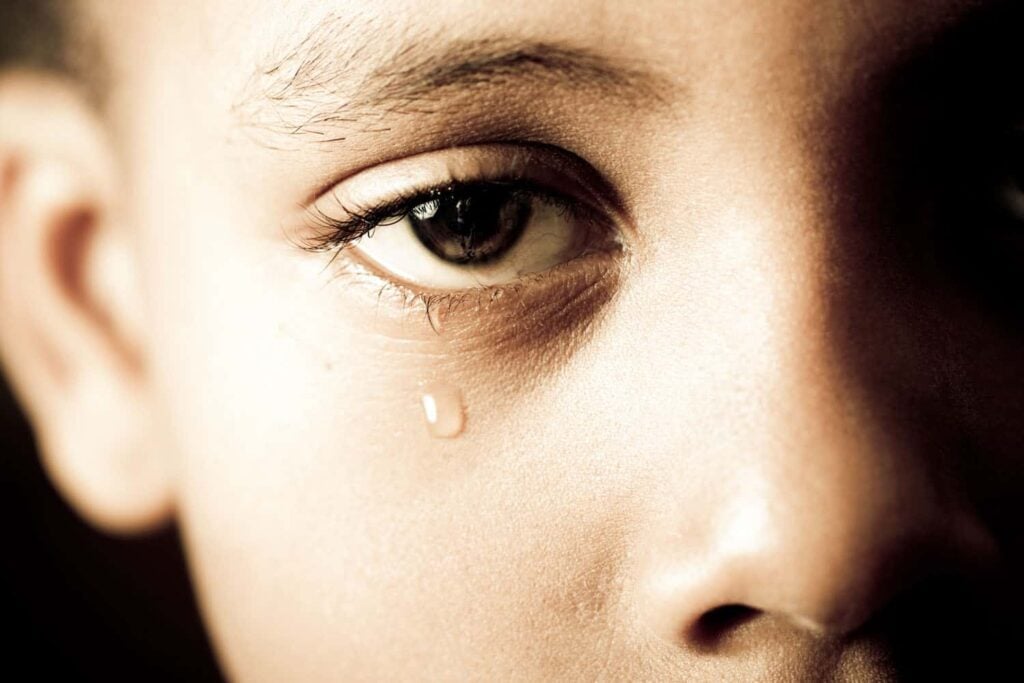Working in ECE survey results.
Office of Early Childhood Education
April 3, 2024.
Abstract:
Explaining what it’s like to work as a teacher in early childhood education (ECE), the Ministry of Education (2024) tells potential recruits that they will make a meaningful difference in children’s lives, their experiences of working in the sector will be good, and it’s a profession people love to work in.
The results of a survey of 3,000 teaching staff in ECE services in 2023 show that it is not always a good job to have and working in ECE can come at a high cost to teachers personally.
In the last year, one quarter of the respondents (25.7%) had experienced bullying or harassment at work. Bullying and harassment is tolerated in some ECE workplaces. There is no requirement in the Education regulations for ECEs to have a policy on bullying, but best practice would be to have such a policy and not accept bullying and harassment.
Just over one quarter of the respondents (28.6%) had experienced a physical injury at work in the last year. Clearly, there is not a strong focus on mitigating risks to adult safety in ECEs. Best practice would be for all ECEs to make sure teaching staff have manual training on how to keep themselves safe when lifting children (etc), and regularly check environments and equipment for safety risks to adults.
Twenty-four percent of the respondents had changed their job at least once in the last year to work for a new ECE service employer. This amount of change is too high in any occupation or profession; and especially in ECE as young children need to form secure attachment relationships with dependable adults which is only possible if their teachers do not keep changing. The top three reasons for leaving their last ECE workplace were: a toxic work environment (51.4%), low pay (30.9%), and lack of support for professional growth and learning (22.4%).
Who can teachers tell about a toxic work environment? When ECE service staff find themselves in a toxic work environment, unable to safely speak-up about concerns affecting children, excluded from meetings or from decision-making as a member of the team, and feeling extreme tension, it should be of concern to the Ministry of Education – but the Ministry of Education does not take an interest in what it sees to be ’employment matters’. It would help if all owners of ECE services, managers and board members received training on good HR practices and how to foster an anti-discriminatory climate and democratic decision-making. Under licensing regulations ECEs must have suitable HR management practices.
Low pay is still a problem that plagues the ECE teaching profession because full pay parity is not available for all ECE teachers and applied evenly across the sector. Public funding for teacher salaries is offered by the Ministry of Education to education and care centres on an opt-in basis (Mitchell 2022). It would appear from comments recently made by Hon. David Seymour that going forward the government is likely to preserve the status quo on ECE teacher pay being low and the gap between the pay of school and kindergarten teachers and other ECE teachers is likely to widen.
In ECEs, lack of support for teachers to have time to engage in learning and professional growth reduces the meaningful impact they can have on children’s lives and leads to dissatisfaction with their job. Beginning teachers can be placed in positions of responsibility to manage an ECE service or lead a team and not given opportunity to focus on their teaching and receive mentoring and support.
At policy level, not enough recognition of the value of ECE knowledge and training is given (Gunn & Hedges, 2022). For example, currently the ‘Person Responsible’ in services is not required to hold a recognised ECE qualification.
The Office of Early Childhood Education (OECE) is concerned that teachers can experience harm while working in a profession that involves caring for and educating children at the most important time of their lives. For decades we have known from the international research literature that ECE programmes sensitive to the needs of adults are in a better position to provide the best possible education for children than those that are not (Jorde-Bloom, 1988).
It is time for the Government and all ECEs to make sure that teaching staff are provided with safe working conditions, a positive workplace culture, are paid well, and supported to grow personally and professionally.
Further relevant NZ research
The Teaching Council “Snapshot of the Teaching Profession” in Aotearoa New Zealand 2023” reports that ECE teachers feel particularly undervalued in the teaching profession by society (p.8).
Read the first report from the 2023 survey on the quality of ECE for children. It pointed to serious issues – including teachers not having time to get to know individual children in their care, concerns for children’s learning, worries about the safety of children, and breaches of adult-child ratio minimums in teacher-led education and care. It noted that these issues are not new and have existed for some years.
About the survey
A full description of the three-yearly ECE Quality and Employment Survey is available from the website of the Office of Early Childhood Education (OECE). The survey captures the views of teaching staff in licensed early childhood services across NZ. It is an online survey and voluntary to participate in. The survey asks participants a range of questions concerning their employment, workplace issues, and the standard of care and education provided to children.
This is the second report to come from the 2023 survey results. This report presents data on:
- The proportion of teaching staff who changed job in the last year to work for a new ECE service employer.
- Why they left their ECE job to go to a new one.
- The physical safety of ECE workplaces by the proportion of respondents who experienced physical injuries.
- The nature of workplace injuries.
- The emotional safety of ECE workplaces by the proportion of respondents who experienced bullying and harassment.
- The effects of bullying and harassment on the teachers personally and others around them.
The respondents
The respondents comprised 3,000 staff working in licensed early childhood services from across NZ. Of these, 79% were employed full-time and 13% part-time. Some were casual workers or relief teachers (5%), and a small proportion were on leave or taking a break (3%).
Unsurprisingly, most of the respondents (92% in total) came from teacher-led centres. Smaller numbers of participants came from parent-led centres and home-based ECE. The high proportion of respondents from teacher-led centres reflects that these centres provide the largest source of paid employment and are also the largest form of ECE provision. Most workers in home-based ECE are independent contractors and not employees – the employees are mostly the visiting teachers and co-ordinators if they are not the service owners.
Many of the participants had been working in the sector for more than 10 years (67%). Most participants were ECE (83%) or primary or secondary (5%) qualified and certificated teachers (others were unqualified or in-training). Participants came from the private (63%) and community-based parts of the sector (37%).
1. The proportion of teaching staff who changed job in the last year to work for a new ECE service employer
Twenty-four percent of the respondents had changed job at least once in the last year to work for a new ECE service employer. On its own, this data shows a high rate of churn. The real staff turnover rate could be a lot higher, as this does not include staff who have retired for example or completely left the ECE sector in NZ.
2. Why they left their ECE job to go to a new one
The top five reasons given by respondents who had changed job were:
- A toxic work environment (51.4%)
- To get better pay/ higher wages (30.9%)
- Lack of support for professional growth and learning (22.4%)
- For more flexible work hours (18.0%)
- For shorter work hours (13.9%)
3. Workplace injuries
In the last year, 28.6% of the respondents had experienced one or more physical injuries at work.
4. The nature of workplace injuries
Workplace injuries can be caused by children. These kinds of injuries are mostly preventable if teachers have support when working with children with behavioural challenges. Ensuring adequate staff ratios for the diverse developmental needs of children could help to reduce the risk to any staff of being injured by a child.
Here is a selection of teachers’ comments on injuries caused by children or because teachers did not have appropriate or adequate support to cope:
- Back injury after having a bike thrown at me by a high needs child.
- Black eye due to thrown toy hitting me as I jumped between a disruptive child and children around them. I was trying to keep everyone safe.
- A child attacked me, pulled a handful of hair out and bit me.
- A child threw a rock and hit my head.
- I was rammed by a trolley and caught in the crossfire of agitated children.
- Torn tendons in my arm and suspected hair line fracture from supporting an autistic child feeling overwhelmed, he was 5.5 years, I am 5 feet.
- I kicked a table trying to keep children from running around, and I broke 2 toes.
Workplace injuries can be caused by poor design of the environment that does not consider adult safety. Here are some selected examples of comments on injuries related to the environment:
- I bumped my head on play equipment. I didn’t duck down enough to get under it.
- A heavy box of resources fell on my foot from a shoulder-height shelf.
- I missed a step and hurt my back and hurt my foot while opening a gate.
- I tripped over a trike in the playground and fell with my ribs landing on some concrete steps.
- I sprained my ankle and back when trying to save children from rolling down our steep walkway to the playground.
- I stopped a baby falling down the stairs in a trolley but I hit the concrete with the full force of my head which bounced up and slammed down again. I have a head injury and extensive facial and side of body bruising.
Injuries can also be caused by poor maintenance of buildings and facilities and failure to eliminate hazards such as ice in the playground being a slipping hazard, high noise levels, and burning from hot water.
- Opening the garage shed, the spring flicked off and wrenched my shoulder.
- I sunk into bark in the playground area and sprained my ankle. The bark was muddy and needed a top up.
- A thoracic sprain in my back from lifting children up and down due to broken nappy change table stairs.
- I damaged my back trying to pull out the change table stairs – it jams sometimes.
- I tripped over a huge lump from carpet that should have been repaired. I got concussion and many bruises. Had a couple of days off work but concussion affected me for a month or two.
- I slipped on water on the floor that had not been cleaned up and fell backwards into the corner of a table.
- I slipped on ice in the playground.
- Hearing loss due to the noise levels.
- I received a burn on my belly due to filling bottles with hot water as we have no filtered water for babies.
Access to manual training on how to keep themselves safe could help to reduce injuries, for example on how to lift children safely and get up and down from small chairs.
- I had to lift a diverse learner who is very heavy and still in nappies at almost 5 years to change him and I slipped a vertebra. This was exacerbated by having to lift the same child off another child to keep them safe.
- When I put the babies in a rolling cot during the fire alarm, I injured my arm and shoulder.
The following selection of quotes highlight the need for employers to respond to safety concerns that staff raise to prevent injury. When injuries occur, employers need to ensure staff can take leave to recover and are not pressured to keep working or to return to work early for any reason.
- I broke my ankle due to inadequate matting near the sink – it was a car carpet with no non-slip backing. I raised it as a safety concern two weeks prior and was told it wasn’t an issue. I was then pulled into a HR meeting about being off for five weeks (though it was recommended by the doctors to have longer off) and I had to return to work earlier due to their staffing issues.
- I pulled a calf muscle. It happened in front of the manager and area manager and they did nothing until I literally yelled out that I cannot walk. They sent me home, then they got upset when I didn’t come in next day even though I had been put off work on ACC.
- I strained my back by having to catch a child who threw themselves off a big climbing box straight at me. I twisted to catch them … off work for 10 days and used my entire sick leave.
5. The emotional safety of ECE workplaces
One quarter of the respondents (25.7%) had experienced bullying or harassment at work in the last year. This suggests that not all ECE services have a policy on bullying or the policy is not implemented in practice.
- I was bullied by another staff member and the bullying was consistently ignored by management. She then left but has since returned. No support or protection has been given to me surrounding it, despite me also now being pregnant and high risk.
- A colleague bullied me in the staff chat group, which resulted in my health problems. The bosses of the centre didn’t support me and they intimidated that my professional life would be affected if I asked the Ministry of Education for help. My family and I were struggling because of this. After I left that centre and joined the current one, my health improved.
An issue that also came up in respondents’ comments was that bullying had potential to occur in services that were not democratically operated – when there was an imbalance of power.
- When you question the centre manager and upper management there is always some forms of bullying and harassment. As a teacher you have less power to say anything or act as you risk losing your job and teaching practising licence.
- My previous workplace did not like that I pointed out safety and environment concerns. I felt unsafe and made it known. Bullying started from there and I was forced to resign.
- I was set up to fail. Not given enough staffing to cover rest breaks. Management was ignoring concerns.
The forms that bullying and harassment took, and reasons were varied as the following selection of quotes show:
- I was bullied by a manager and my head teacher because I was still a new ECE teacher in NZ.
- The head teacher will often try and get me to do most of the lifting jobs while she just walks around pretending to pick things up the desks. I believe this might be because I am from another culture. She has also remarked about my religion stating that what kind of a follower follows someone that is nailed on a cross.
- Pay rate put up then taken down – I felt pressure to agree and sign. There’s ganging up on you as the least popular staff member if you don’t sign.
- It came from management and trickled down. The boss had favourites. I was bullied until I left that centre. Nine teachers left in 1 1/2 years. Terrible place.
- Rules seem to change depending on what staff they are being applied to. Arriving 10 to 15 minutes before opening time, unpaid, to set up for the day but demand that I am not allowed to leave 5 minutes early if children are all gone without losing pay. There seems to be a culture of mistrust and that sadly interferes with a harmonious environment.
- Management was harder on me than others when it came to doing the work. There were some teachers that could just refuse to do work and get away with it. This manager has an approach of asking how the person is and how are things going only to then rip into them.
- Not every teacher is asked for their thoughts on important matters. Not every teacher is listened to. Teachers who are known to speak in favour of the management get more attention and importance.
6. The effects of bullying and harassment on the teachers personally and others around them
Bullying and harassment can have negative impacts on the teacher’s work and on their colleagues. It can have serious consequences for teacher mental health and their love of the ECE profession. It can hurt their employment, and create financial hardship for them and their families. Bullying may occur in front of children.
Below are some selected quotes to illustrate the breadth of effects that bullying had.
- Another teacher noticed the bullying and told me quietly that she can’t do/say anything to support me because she “needs to play the game” and keep quiet.
- Often being blamed for things that had nothing to do with me, and I knew nothing about. Manager changing my hours overnight as a punishment for things that I knew nothing about. I went home and cried most days. I was so close to leaving ECE for good.
- Constantly being picked on, tone of voice (yelled at). I felt anxious and would not go into work until start time as I did not know what the atmosphere was going to be like from one day to the next.
- The head teacher had enormous stress placed on her, and her attitudes towards teachers were very nasty. It made me feel that I’m not good enough. Sometimes my colleague cried on phone calls to me.
- High expectations of management, they were bullies, toxic, and only money focused. Owner abused me for contacting a friend in another one of their centres. I ended up in hospital with cardiomyopathy, bought on by extreme stress.
- I was bullied out for speaking up for myself, colleagues, and children. I now suffer with anxiety and depression, and as a result I struggle financially.
- My stress levels are high and this has impacted on how my family is.
Bullying has an impact on staff retention in services, which in turn puts managers and staff under more pressure and stress and may lead to more bullying and harassment.
- Managers refuse to see teachers stress, the work load, lack of support and time to meet their expectations. They push us out, then wonder why they can’t get staff.
- I was an easy target as a reliever. Always blamed for things that went wrong because I am the reliever.
- Racist teachers were not being pulled up for their behaviour because they were needed due to the service being short staffed and they couldn’t risk them leaving.
Discussion
It is well known through media reports that the early childhood sector in NZ is not in good shape when it comes to providing affordable and accessible education and care of children that is quality or at least meets regulatory standards (Keogh, 2024 a,b).
This report has drawn on results from the 2023 ECE Teacher Survey to investigate what it is like to be an ECE teacher. Over a twelve-month period 24% of the survey respondents changed jobs to a new ECE employer/ workplace and of these 51% did so because their work environment was toxic. Low pay and lack of professional support were the second and third most frequently cited reasons for changing jobs.
There does not seem to be a strong focus on adult safety in ECE environments. The survey feedback pointed to bullying being a systematic issue in the sector. Physical injuries experienced by teachers were often preventable.
Given these findings, the question of “What is it like to be an ECE teacher?” could be turned around to ask “Who would want to be an ECE teacher if you knew what it was like?”.
No ECE teachers should have to struggle to make a positive difference in the lives of young children and feel good to be in the profession. The causes of high staff churn need to be addressed if the ECE sector is to attract, retain and grow a well-qualified ECE knowledgeable workforce (Gunn & Hedges, 2022).
Feedback from the survey tells us that the keys to reducing staff churn include ensuring teacher safety is a priority, they are well paid, experience good working conditions and a positive work culture, and are supported in their development and learning.
References
Gunn, A.C. and Hedges, H. (2022). Knowledgeable and qualified early childhood teachers: Tensions, constraints, and possibilities. NZ Annual Review of Education, 28, 148-159.
Jorde-Bloom, P. (1988). A great place to work: Improving conditions for staff in young children’s programmes. NAEYC.
Keogh, B. (2024). Early childhood sector in ‘race to the bottom’. The Post, Insight, 17 Feb 2024, B1.
Keogh, B. (2024b). Are our kids safe in ECE? 30% more services pulled up for breaches. The Post, 7 March 2024, 16-17.
Ministry of Education (2024). What it’s like to teach in ECE? Retrieved on 27 Feb 2024 from https://www.education.govt.nz/early-childhood/people-and-employment/early-learning-teacher-profiles/
Mitchell, L. (2022). Transformative shifts in early childhood education systems after four decades of neoliberalism. NZ Annual Review of Education, 28, 132-147.
OECE (2023). The quality of early childhood education provided to children – 3-yearly teacher survey results. Retrieved from https://oece.nz/public/evidence/reports/survey-ece-quality-provided-to-children
Teaching Council of Aotearoa NZ (2023). Snapshot of the teaching profession 2023. https://teachingcouncil.nz/assets/Files/Publications/Snapshot-of-the-teaching-profession-2023.pdf







